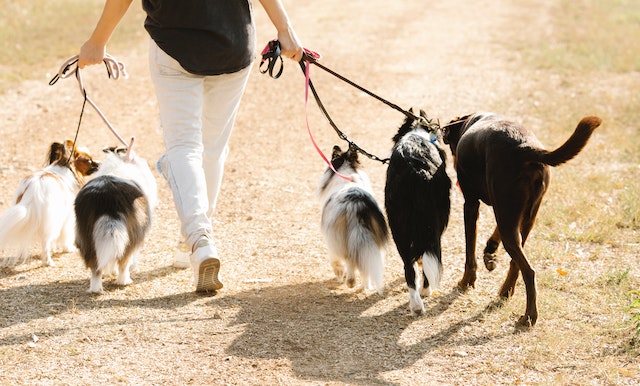Introduction: Owning multiple dogs can be a rewarding and enriching experience. However, it also comes with its own set of challenges. Finding a balance between the advantages and disadvantages is essential to ensure a harmonious and fulfilling life for both you and your furry friends. In this article, we will explore the pros and cons of owning multiple dogs, helping you make an informed decision and find the right balance for your household.
Pros of Owning Multiple Dogs:
- Companionship and Socialization: One of the greatest benefits of owning multiple dogs is the companionship they provide to each other. Dogs are social animals, and having canine companions can alleviate loneliness and separation anxiety, especially when you’re away from home. They can engage in play, exercise together, and provide constant company to one another.
- Increased Exercise and Stimulation: With multiple dogs, there is a higher likelihood of increased exercise and playtime. Dogs are natural athletes, and having a pack can encourage more physical activities such as walks, runs, and interactive play sessions. The energy and enthusiasm of one dog can often motivate the others to join in, leading to a more active lifestyle for all.
- Learning and Behavioral Development: Dogs learn from observing and interacting with each other. When you have multiple dogs, they have the opportunity to learn and develop important social and behavioral skills. They can mimic positive behaviors, play cooperatively, and establish a hierarchy within the pack, which promotes balanced socialization and communication.
- Emotional Support and Reduced Separation Anxiety: For dogs prone to separation anxiety, having a companion can offer comfort and reassurance when you’re not at home. Dogs can provide emotional support to each other, reducing stress and anxiety levels. Knowing they have a furry friend nearby can help alleviate separation-related distress, resulting in more content and emotionally stable dogs.
Cons of Owning Multiple Dogs:
- Time and Individual Attention: Owning multiple dogs requires a significant time commitment. Each dog needs individual attention, exercise, training, and affection. With more dogs, dividing your time among them can be challenging, potentially leading to reduced individual attention and bonding. It’s crucial to ensure that each dog receives quality time and care to prevent feelings of neglect.
- Increased Financial Responsibility: Multiple dogs mean increased financial obligations. Expenses such as food, veterinary care, grooming, vaccinations, and supplies multiply with each additional dog. It’s important to consider whether your budget can comfortably accommodate the financial demands of multiple dogs while still providing the necessary quality care they require.
- Potential for Territory and Resource Guarding: Introducing multiple dogs into a household can lead to issues such as territory and resource guarding. Dogs may display possessive behaviors over food, toys, or personal space, causing conflicts among them. Proper training, socialization, and providing ample resources for each dog can help mitigate these challenges, but it’s essential to be prepared for potential issues that may arise.
- Increased Management and Training Efforts: Managing and training multiple dogs require a higher level of organization, consistency, and training skills. Each dog has unique needs and personalities, and it’s important to address them individually while maintaining a harmonious household dynamic. It may require additional effort and patience to ensure proper discipline, routine, and behavioral expectations are met.
Finding a Balance:
To find a balance in owning multiple dogs, consider the following:
- Assess your time, energy, and financial capabilities to ensure you can adequately meet the needs of each dog.
- Gradually introduce dogs to each other, allowing them to establish a positive pack hierarchy and minimize potential conflicts.
- Provide individual attention, training, and affection to each dog to maintain a strong bond and prevent feelings of neglect.
- Establish clear routines and boundaries, ensuring that each dog has their own space, resources, and opportunities for social interaction.
- Seek professional guidance and support, such as dog trainers or behaviorists, to address any challenges that may arise.
Conclusion: Owning multiple dogs can be a wonderful experience filled with companionship, increased exercise, and mutual learning. However, it’s important to weigh the pros and cons and find a balance that suits your lifestyle, resources, and ability to provide individual attention and care. With careful consideration, proper management, and a commitment to each dog’s well-being, owning multiple dogs can bring immense joy and fulfillment to your household.










